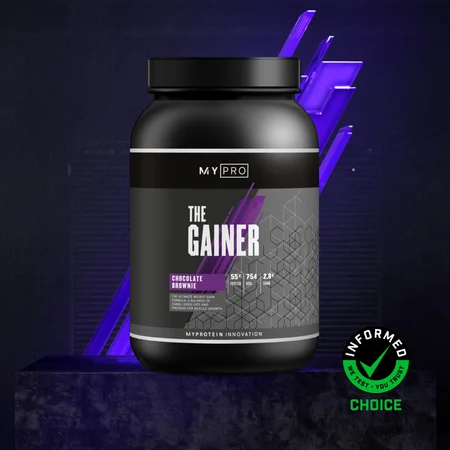In the previous part of the “Clean Bulk and Cut – How to Design a Diet” we discussed how to set your calorie goal for both clean bulk and cut. This time we will get all nitty-gritty with calculating your macros. What are macronutrients, why do we need them and in what quantities?
Read on for the next step in designing your very own, personalised diet.
Step 1-2:
See
Step 3: Calculating Macronutrients
Macronutrients are “large” nutrients, which provide energy and are required by the body for a range of metabolic functions. These include carbohydrates, fats and of course our much loved protein.
One gram of a macronutrient provides certain amount of energy, expressed in kilocalories (kCal).
| Amount (g) | Macronutrient | Energy (kCal) |
| 1 | Protein | 4 |
| 1 | Fat | 9 |
| 1 | Carbohydrate | 4 |
In the previous part of the article you found out how to work out how many kilocalories you will need to either gain or lose weight. To make sure that your body has all it needs to function properly you need to split this amount among the macronutrients. It’s a little like managing your money after a payday – some will go for rent, some will go for bills other for groceries.
If you won’t manage your money correctly you might end up washing your clothes by beating them up with a rock in a nearby river, because United Utilities turned the taps off. Similarly you want to make sure that your body won’t be cutting off something it needs.
Confused with macro splits?
Different types of diets advocate different macronutrients split. In other words, you’ll see some fitness experts recommending high-fat/low-carbohydrate diets and others high-carbohydrate/low-fat diets (not many argue about protein). Both approaches have some good arguments behind them… but all in all there is no clear winner. In this article we won’t victimise any particular nutrient, instead focusing on designing a balanced diet- i.e. a diet which doesn't exclude any food group.
Nutritionist and dieticians often use plate models to illustrate how a healthy diet should look like. These simply show what portion of your daily kitchen plate should consist of what. Even though athletes and gym freaks alike may have higher nutritional needs, the plate model gives a good indication of what to eat and in what quantities.
Below you can see the Harvard Medical School’s model which will help you to understand the concept of a balanced diet.
Of course in physique sports diets are much more meticulous – using some sort of measurement of food intake rather than dividing your plate into four sections showed above. Below you will find a brief description of each macro-nutrient and intake suggestions along with step-by-step guide how to calculate your daily macro-nutrient intake goals.
Remember that you will need to estimate how many calories you need before moving on to this step.
Protein
Protein probably doesn't need explanation. The building material for all the cells in human body – not only muscle but also internal organs, immune cells and so on. Unlike carbohydrates and fats, your body does not really store proteins.
Instead, it keeps an amino-acid (broken down protein) pool in your blood. If you don’t consume enough dietary protein this pool shrinks and your body may begin breaking down tissues to get some of the missing amino acids. Meaning that your hard earned mass goes down the drain! On top of that, weight training increases your protein demand. That is because you:
? “Burn” some amino acids during anaerobic training.
? Cause micro-damage to the muscles which will need “patching up” with protein.
? May have above average muscle mass, which will require more protein to be maintained.
Once you meet your metabolic demands for protein, any additional amounts won’t make your gains progress any quicker. There is limited evidence of suggesting more than 2-3g of protein per 1kg of bodyweight.
For a 70kg lifter that means consuming 70 x 2g = 140g of protein a day. Roughly an equivalent of 2
| Protein Demand | Body Weight | Amount of Protein |
| 2g per kg of bodyweight | 70kg | 70kg x 2g = 140g |
Once you know how many grams of protein you need, you will need to work out how many calories is that.
Simply multiply your number by 4, knowing that 1g of protein equals to 4kCal. We will use that number later.
| Protein’s Energy Value | Amount of Protein | Amount of kCal from Protein |
| 4kCal per 1g of dietary protein | 140kg | 140kg x 4g = 560kcal |
Fats
The infamous nutrients with some bad publicity back in the days. Despite all of that, fat is an essential nutrient, without which we could not survive.
Among many functions dietary fat:
? Allows absorption of fat soluble vitamins (A, D, E, K)
? Builds phospholipid membranes of all the cells in our bodies (including muscle cells.’)
? Plays a role in inflammatory response.
? Serves as a testosterone pre-cursor.
Fat is the most energy dense (calories per gram) nutrient, so it can easily be overeaten… and seeing as it also is quite readily stored as body fat some moderation would be advised. Saying that you definitely do not want to go fat-free!
If fat content of a diet falls below 20% of total calories, fat-soluble vitamin deficiencies may be likely. That is why we are aiming for at least 20% of calories from dietary fat. To work it out, you will need to know what is you calorie goal (see part I).
Simply calculate 20% of your daily kCal target and divide it by 9kCal (amount of calories per gram of fat) to get your daily, dietary fat goal. In the table below you can see example of a calculation for our 70kg lifter from part I.
| Bulk | Cut |
| 2594 kcal | 2122 kcal |
| 2594 : 100% | 2122 : 100% |
| 25.94 x 20% | 21.22 x 20% |
| 518.8 kcal : 9kcal | 424.4 kcal : 9kcal |
| 57g | 47g |
Carbohydrates
Strictly speaking, the main source of energy for the human body; carbohydrates are a non-essential nutrient. You can live without eating any carbohydrates, just like you can drive a car without petrol… but downhill only.
Similarly lack of carbohydrates in your diet will lead to sub-optimal gym performance. In some circumstances this may be an acceptable trade off – for example if you are very overweight or largely physically inactive. Nevertheless, this article focuses on a balanced diet for somewhat of a balanced lifestyle so we assume that you need carbs.
Carbohydrates are used to:
? Maintain your blood sugar level.
? Top-up glycogen (“energy”) stores in liver and skeletal muscle; giving them a full, “inflated” look.
? Signal the release of insulin – arguably the most anabolic hormone around.
? Create fatty acids which can be stored as body-fat (if too much carbohydrate is consumed.)
...So how much is too much? How many carbohydrates do you need?
There is no straight forward answer – it depends on the amount of muscle you carry, your physical activity level and sensitivity to carbohydrates. Nevertheless, the common principle in setting your daily intake goal is to allocate all remaining calories (after working out how much protein and fat you need) to carbs.
If you did a good job at analysing your baseline diet you should be fairly confident in these numbers… and you should not grow a spare tyre overnight!
The table below shows how we calculated the daily carbs goal for our imaginary 70kg lifter; finalising our macro-nutrient breakdown.
| Bulk | Cut | |
| kCal goal | 2594 kcal | 2122 kcal |
| -kCal from protein | -560kcal | -560kcal |
| -kCal from fat | -519kcal | -424kcal |
| kCal left for carbohydrates | 1515kcal : 4kcal | 1138kcal : 4 kcal |
| Grams of carbohydrate | 379g | 284g |
Take Home Message
In this part of the “Clean Bulk and Cut – How to Design a Diet” we discussed how to allocate your calorie allowance for protein, fat and carbohydrates ensuring a well-balanced macro-nutrient intake.
Overall, the suggested diet composition looks as follows:
? Protein: 2-3g per 1kg of body-weight
? Fat: 20% of your total calorie intake
? Carbohydrates: remaining amount of calories
Based on the example of a 70kg lifter described in the first part of the article, you can see the crunched numbers in a table below.
| Bulk | Cut | |
| Protein | 140g | 140g |
| Fats | 57g | 47g |
| Carbohydrates | 379g | 284g |
In the next part we will focus on:
? Structuring your meals ? Food choices.
Improperly designed restrictive diets can be dangerous; excluding essential nutrients leading to malnutrition and serious health issues. It takes practice and expertise to design a diet meeting all macro- and micro- nutrient requirements, ensuring optimal dietary intakes. Special populations (e.g. adolescent, pregnant women, individuals suffering from medical conditions etc.) may require particular attention to dietary intakes. Any dietary modifications should be accompanied by a supervision of a General Practitioner and/or qualified Dietician. Always consult a qualified personal healthcare provider before making any dietary changes. The following article is provided as educational information only and should not be understand as a medical advice. The author disclaims any liability or warranties of any kind arising directly or indirectly from use of this article.






